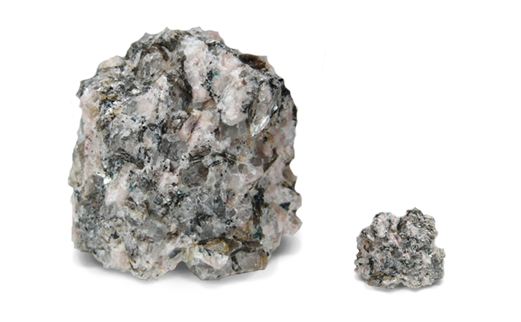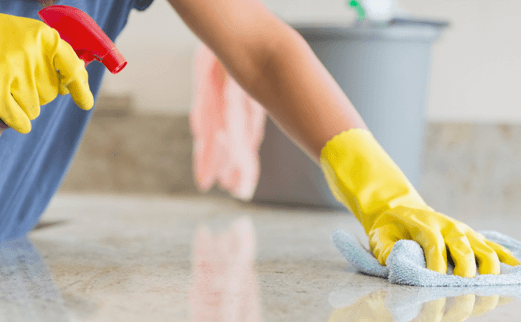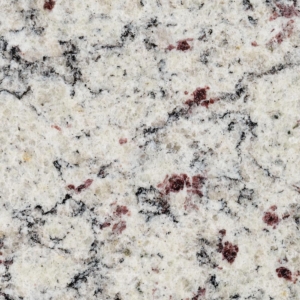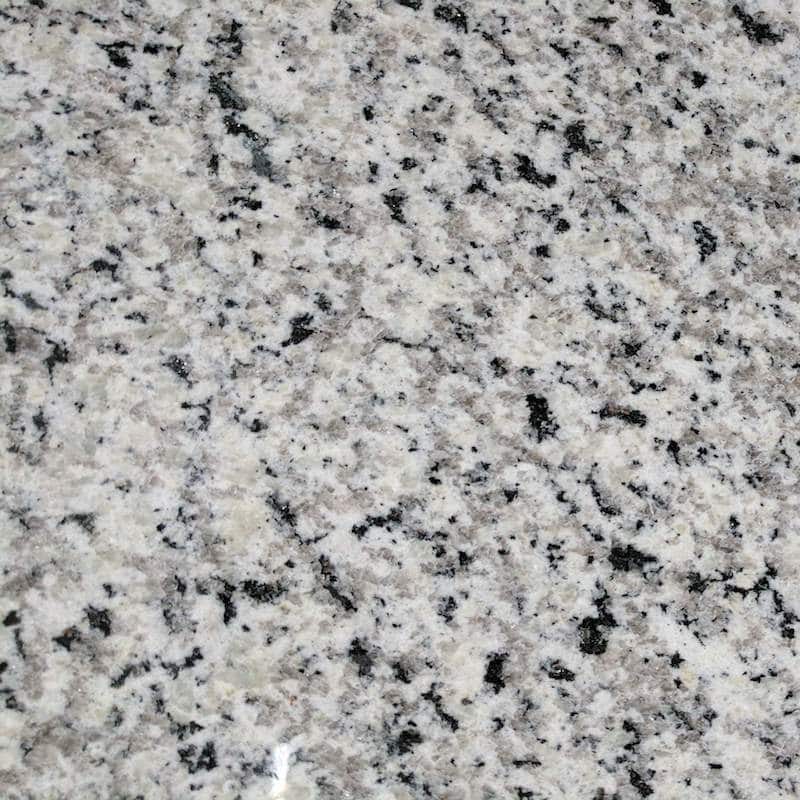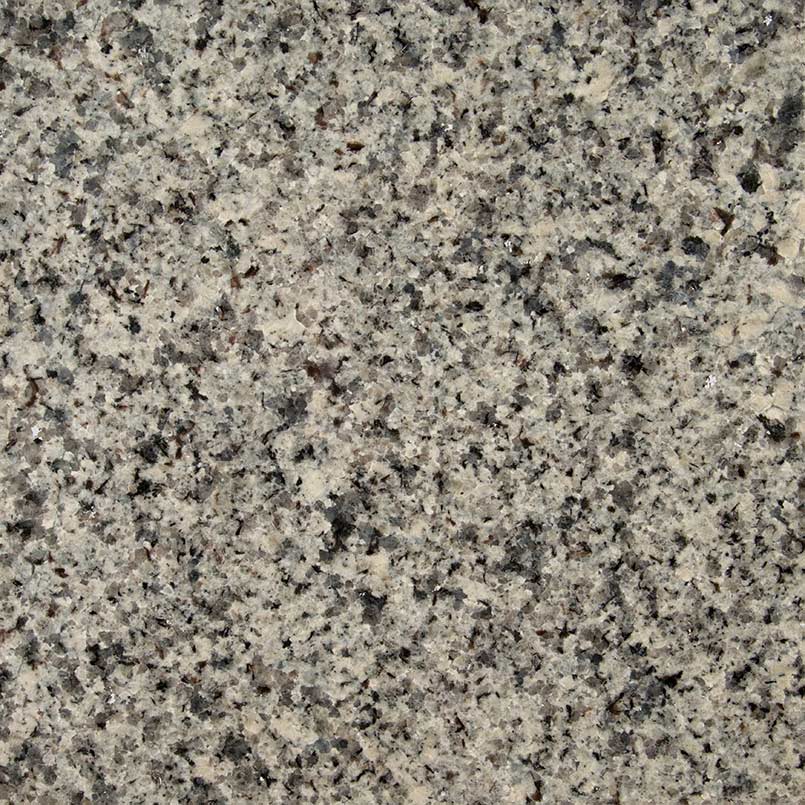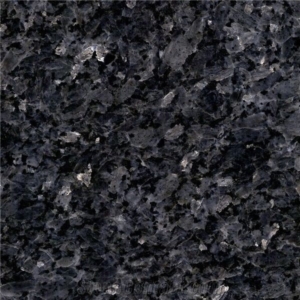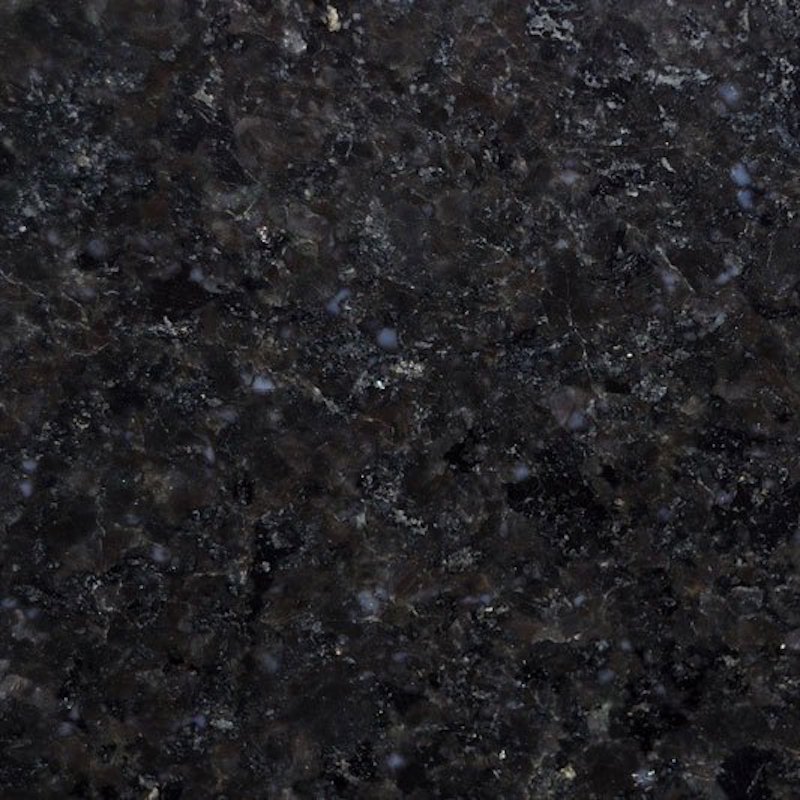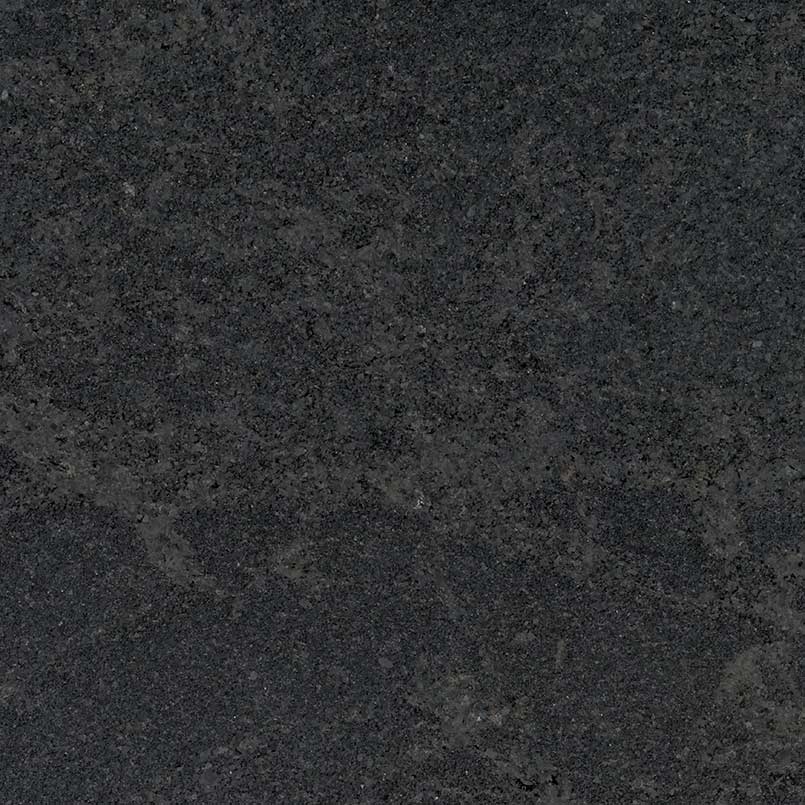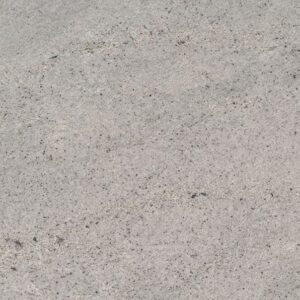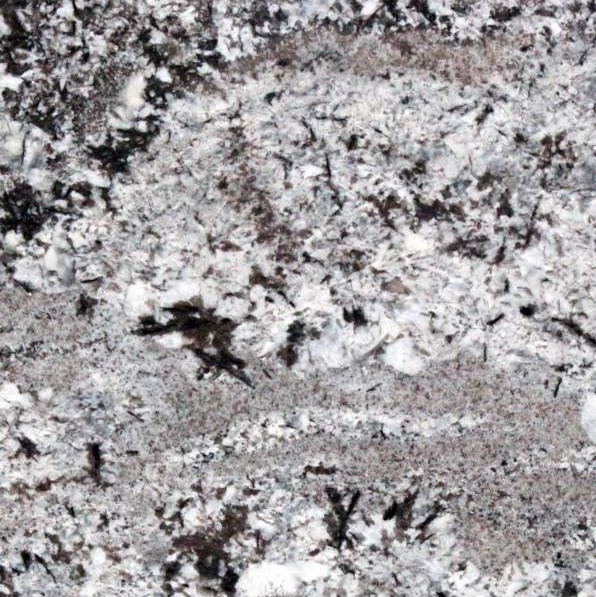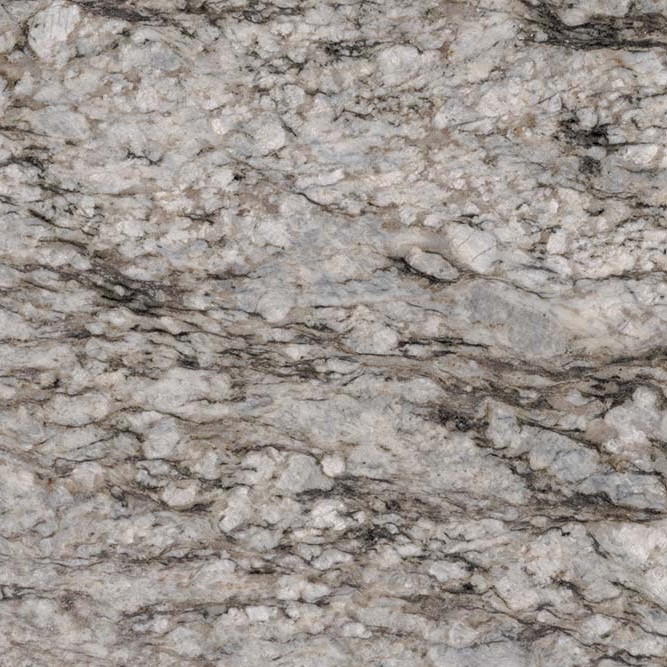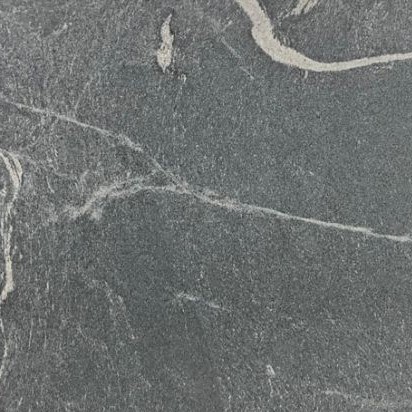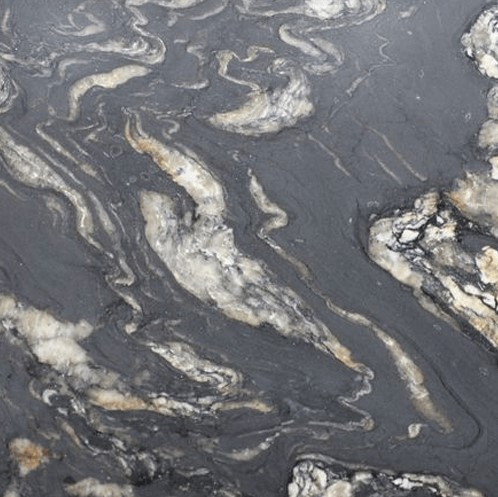Granite Countertops
The allure of granite is unique, engaging and ever changing, with no two slabs ever being exactly identical. The composition of granite varies greatly and may have natural imperfection. Granite is porous and must have a sealer applied. Granite will require some maintenance both cleaning and resealing.
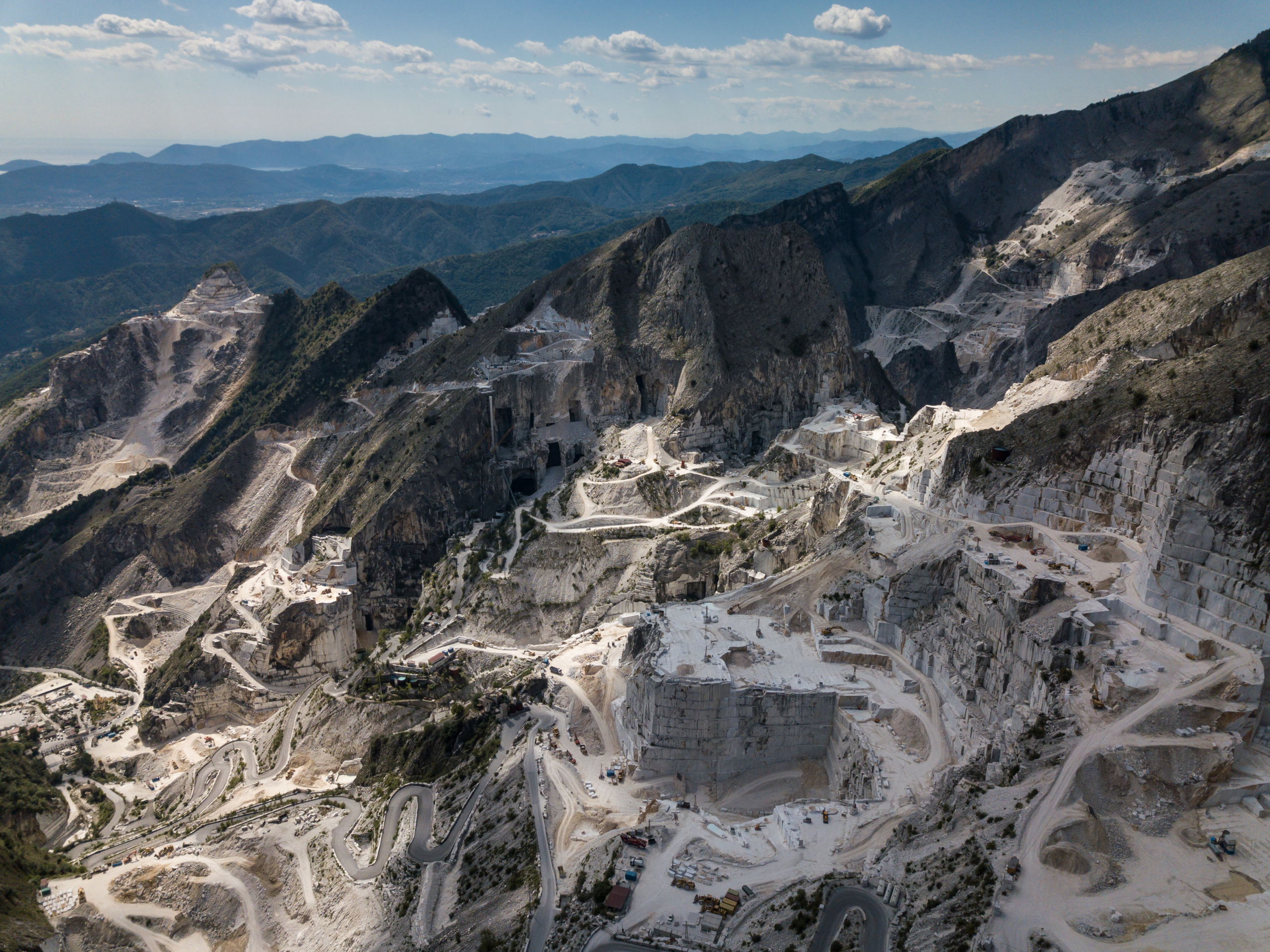
 Where Does Granite Come From?
Where Does Granite Come From?
Granite is believed to have been formed 300 million years ago. It began as a mass of molten rock formed by volcanic activity about 11 or 12 miles below the Earth’s surface. Magma gradually rises to the surface where it began to cool and solidifies into granite. The colors are amazing and the material extremely durable. Great characteristics for countertops. Come see our granite selection in our facility in Shawnee, KS.
![]()
![]()
![]()
![]()
![]()
![]()
 What Is a Granite Countertop Made Of?
What Is a Granite Countertop Made Of?
Granite is crystalline and will always have tiny pits or spaces between the various mineral crystals. It’s not uniform in color or pattern, nor is it free of blemishes. Granite also contains natural fissures that appear to be cracks. They are not structural defects and will not impair durability.
Granite is composed primarily of feldspar, quartz, and mica. These minerals are what give it its various colors. The white mineral grains in granite are feldspar, our planet’s most abundant rock. The light gray, glass-like veins are quartz. The black, flake-like veins are biotite or black mica.
 Granite Adds Value & Won’t Depreciate
Granite Adds Value & Won’t Depreciate
Unlike synthetics, granite presents a surface depth that seems almost three-dimensional. Regardless of its finish, granite creates an immediate impression of elegance and is considered a definite plus on any real estate broker’s checklist.
Granite is frequently used in more applications than just kitchen countertops. It is cool to the touch, and presents an image of classic grace and beauty with its unique variations in color and veining. Each specimen is a natural work of art.
 Granite Cleaning (Recommendations)
Granite Cleaning (Recommendations)
Granite can be cleaned with a mild liquid dishwashing detergent or a stone soap with warm water. Too much cleaner may leave a film or cause streaks. Rinse thoroughly and dry with a soft cloth.
Minimize soap scum by using a squeegee. A non-acidic soap scum remover or a solution of ammonia and water can also be used. Over-use of an ammonia solution may eventually dull the stone’s surface.
SCI Granite Collection
SCI currently offers 14 granite program colors. These colors are categorized in price groups 1-5. Our program granite is sold by the square foot and can be seen in large displays in our professional showroom in Shawnee, Kansas.
Special Order Granite
If we don’t have the material color that you are looking for in our program line up it’s likely we can get it. Hand select materials are usually purchased by the slab.
SCI Granite Collection
 Group One Granite
Group One Granite
 Group Two Granite
Group Two Granite
 Group Three Granite
Group Three Granite
 Group Four Granite
Group Four Granite
 Edge Profiles
Edge Profiles
Ready to begin?
Visit our showroom and warehouse facilities in Shawnee, KS.
Give us a call, or fill out our contact form and we’ll be in touch shortly!
Surface Center Interiors
The preferred countertop fabricator & installer in the Kansas City area
Monday-Friday 8:00am-4:30pm
Appointments highly encouraged
|
Granite Cleaning Recommendations Natural stone surfaces can be cleaned with a small amount of neutral cleaner, stone soap or a mild liquid dishwashing detergent and warm water. A rag mop can be used on floors and a soft cloth for other surfaces. Too much cleaner may leave a film or cause streaks. Do not use products that contain lemon, vinegar or other acids on any natural stone surfaces. Rinse the surface thoroughly after cleaning and dry with a soft cloth. Do not use products that contain abrasives because they may scratch the surface. Soap scum can be minimized by using a squeegee after each use. To remove soap scum, use a non-acidic soap scum remover or a solution of ammonia and water (about 1/2 cup ammonia to a gallon of water). Frequent or over-use of an ammonia solution may eventually dull the surface of the stone. Granite Sealing & Maintenance Cleaning your countertops after each meal is the best recommendation for avoiding cleaning issues with your natural stone! If a homeowner cleans their countertops after each meal, they will rarely, if ever, have staining or cleaning issues with their natural stone. Granite countertops receive additional benefit from being sealed. That benefit is the further reduction of moisture migration into an already moisture resistant surface. Once properly sealed, the stone will be more resistant against everyday dirt and spills. Sealing is a simple process that takes no more time than cleaning. Simply wipe a small amount of sealer over the entire stone’s surface, leave it to set for a minute or two, and wipe the surface again with a clean, dry cloth to ensure the sealant is even. SCI – Surface Center recommends using coasters under all glasses, particularly those containing alcohol or citrus juices. Many common foods and drinks contain acids that can dull the surface of natural stone. Do not place hot items directly on the stone surface. Though granite will not scorch, the heat can be harbored in the stone. We recommend always using trivets under hot dishes and placemats under china, ceramics, silver or other objects that can cause scratches. Recommended cleaning products are on display and available at our Countertop Showroom! Granite Cleaning Recomendations for Spills & Stains If a spill occurs on a natural stone surface, dab the spill with a towel immediately. Don’t wipe the area, it will spread the spill. Flush the area with plain water and mild soap and rinse several times. Dry the area thoroughly with a soft cloth. Repeat as necessary. Stain Removal Surface stains can often be removed by cleaning with an appropriate cleaning product or household chemical. Stubborn stains may require using a poultice or calling in a professional. The type of stain will determine the removal technique.
Poultices A poultice is a liquid cleaner mixed with a white absorbent material to form a paste. The poultice should be spread over the stained area to a thickness of about 1/4 to 1/2 inch with spatula. Then covered with plastic, tape the edges down to seal it, and leave it to draw out the stain for 24 to 48 hours. After about 24 hours, remove the plastic and allow the poultice to dry. Poultice procedures may have to be repeated to thoroughly remove a stain, but some stains may never be completely removed. Poultice materials include kaolin, fuller’s earth, whiting, diatomaceous earth, powdered chalk, white molding plaster or talc.
|
Call: 913.422.0500
E-mail: info@2nz.ede.myftpupload.com
|
Granite Cleaning Recommendations Natural stone surfaces can be cleaned with a small amount of neutral cleaner, stone soap or a mild liquid dishwashing detergent and warm water. A rag mop can be used on floors and a soft cloth for other surfaces. Too much cleaner may leave a film or cause streaks. Do not use products that contain lemon, vinegar or other acids on any natural stone surfaces. Rinse the surface thoroughly after cleaning and dry with a soft cloth. Do not use products that contain abrasives because they may scratch the surface. Soap scum can be minimized by using a squeegee after each use. To remove soap scum, use a non-acidic soap scum remover or a solution of ammonia and water (about 1/2 cup ammonia to a gallon of water). Frequent or over-use of an ammonia solution may eventually dull the surface of the stone. Granite Sealing & Maintenance Cleaning your countertops after each meal is the best recommendation for avoiding cleaning issues with your natural stone! If a homeowner cleans their countertops after each meal, they will rarely, if ever, have staining or cleaning issues with their natural stone. Granite countertops receive additional benefit from being sealed. That benefit is the further reduction of moisture migration into an already moisture resistant surface. Once properly sealed, the stone will be more resistant against everyday dirt and spills. Sealing is a simple process that takes no more time than cleaning. Simply wipe a small amount of sealer over the entire stone’s surface, leave it to set for a minute or two, and wipe the surface again with a clean, dry cloth to ensure the sealant is even. SCI – Surface Center recommends using coasters under all glasses, particularly those containing alcohol or citrus juices. Many common foods and drinks contain acids that can dull the surface of natural stone. Do not place hot items directly on the stone surface. Though granite will not scorch, the heat can be harbored in the stone. We recommend always using trivets under hot dishes and placemats under china, ceramics, silver or other objects that can cause scratches. Recommended cleaning products are on display and available at our Countertop Showroom! Granite Cleaning Recomendations for Spills & Stains If a spill occurs on a natural stone surface, dab the spill with a towel immediately. Don’t wipe the area, it will spread the spill. Flush the area with plain water and mild soap and rinse several times. Dry the area thoroughly with a soft cloth. Repeat as necessary. Stain Removal Surface stains can often be removed by cleaning with an appropriate cleaning product or household chemical. Stubborn stains may require using a poultice or calling in a professional. The type of stain will determine the removal technique.
Poultices A poultice is a liquid cleaner mixed with a white absorbent material to form a paste. The poultice should be spread over the stained area to a thickness of about 1/4 to 1/2 inch with spatula. Then covered with plastic, tape the edges down to seal it, and leave it to draw out the stain for 24 to 48 hours. After about 24 hours, remove the plastic and allow the poultice to dry. Poultice procedures may have to be repeated to thoroughly remove a stain, but some stains may never be completely removed. Poultice materials include kaolin, fuller’s earth, whiting, diatomaceous earth, powdered chalk, white molding plaster or talc.
|
|
Granite Cleaning Recommendations Natural stone surfaces can be cleaned with a small amount of neutral cleaner, stone soap or a mild liquid dishwashing detergent and warm water. A rag mop can be used on floors and a soft cloth for other surfaces. Too much cleaner may leave a film or cause streaks. Do not use products that contain lemon, vinegar or other acids on any natural stone surfaces. Rinse the surface thoroughly after cleaning and dry with a soft cloth. Do not use products that contain abrasives because they may scratch the surface. Soap scum can be minimized by using a squeegee after each use. To remove soap scum, use a non-acidic soap scum remover or a solution of ammonia and water (about 1/2 cup ammonia to a gallon of water). Frequent or over-use of an ammonia solution may eventually dull the surface of the stone. Granite Sealing & Maintenance Cleaning your countertops after each meal is the best recommendation for avoiding cleaning issues with your natural stone! If a homeowner cleans their countertops after each meal, they will rarely, if ever, have staining or cleaning issues with their natural stone. Granite countertops receive additional benefit from being sealed. That benefit is the further reduction of moisture migration into an already moisture resistant surface. Once properly sealed, the stone will be more resistant against everyday dirt and spills. Sealing is a simple process that takes no more time than cleaning. Simply wipe a small amount of sealer over the entire stone’s surface, leave it to set for a minute or two, and wipe the surface again with a clean, dry cloth to ensure the sealant is even. SCI – Surface Center recommends using coasters under all glasses, particularly those containing alcohol or citrus juices. Many common foods and drinks contain acids that can dull the surface of natural stone. Do not place hot items directly on the stone surface. Though granite will not scorch, the heat can be harbored in the stone. We recommend always using trivets under hot dishes and placemats under china, ceramics, silver or other objects that can cause scratches. Recommended cleaning products are on display and available at our Countertop Showroom! Granite Cleaning Recomendations for Spills & Stains If a spill occurs on a natural stone surface, dab the spill with a towel immediately. Don’t wipe the area, it will spread the spill. Flush the area with plain water and mild soap and rinse several times. Dry the area thoroughly with a soft cloth. Repeat as necessary. Stain Removal Surface stains can often be removed by cleaning with an appropriate cleaning product or household chemical. Stubborn stains may require using a poultice or calling in a professional. The type of stain will determine the removal technique.
Poultices A poultice is a liquid cleaner mixed with a white absorbent material to form a paste. The poultice should be spread over the stained area to a thickness of about 1/4 to 1/2 inch with spatula. Then covered with plastic, tape the edges down to seal it, and leave it to draw out the stain for 24 to 48 hours. After about 24 hours, remove the plastic and allow the poultice to dry. Poultice procedures may have to be repeated to thoroughly remove a stain, but some stains may never be completely removed. Poultice materials include kaolin, fuller’s earth, whiting, diatomaceous earth, powdered chalk, white molding plaster or talc.
|
|
Granite Cleaning Recommendations Natural stone surfaces can be cleaned with a small amount of neutral cleaner, stone soap or a mild liquid dishwashing detergent and warm water. A rag mop can be used on floors and a soft cloth for other surfaces. Too much cleaner may leave a film or cause streaks. Do not use products that contain lemon, vinegar or other acids on any natural stone surfaces. Rinse the surface thoroughly after cleaning and dry with a soft cloth. Do not use products that contain abrasives because they may scratch the surface. Soap scum can be minimized by using a squeegee after each use. To remove soap scum, use a non-acidic soap scum remover or a solution of ammonia and water (about 1/2 cup ammonia to a gallon of water). Frequent or over-use of an ammonia solution may eventually dull the surface of the stone. Granite Sealing & Maintenance Cleaning your countertops after each meal is the best recommendation for avoiding cleaning issues with your natural stone! If a homeowner cleans their countertops after each meal, they will rarely, if ever, have staining or cleaning issues with their natural stone. Granite countertops receive additional benefit from being sealed. That benefit is the further reduction of moisture migration into an already moisture resistant surface. Once properly sealed, the stone will be more resistant against everyday dirt and spills. Sealing is a simple process that takes no more time than cleaning. Simply wipe a small amount of sealer over the entire stone’s surface, leave it to set for a minute or two, and wipe the surface again with a clean, dry cloth to ensure the sealant is even. SCI – Surface Center recommends using coasters under all glasses, particularly those containing alcohol or citrus juices. Many common foods and drinks contain acids that can dull the surface of natural stone. Do not place hot items directly on the stone surface. Though granite will not scorch, the heat can be harbored in the stone. We recommend always using trivets under hot dishes and placemats under china, ceramics, silver or other objects that can cause scratches. Recommended cleaning products are on display and available at our Countertop Showroom! Granite Cleaning Recomendations for Spills & Stains If a spill occurs on a natural stone surface, dab the spill with a towel immediately. Don’t wipe the area, it will spread the spill. Flush the area with plain water and mild soap and rinse several times. Dry the area thoroughly with a soft cloth. Repeat as necessary. Stain Removal Surface stains can often be removed by cleaning with an appropriate cleaning product or household chemical. Stubborn stains may require using a poultice or calling in a professional. The type of stain will determine the removal technique.
Poultices A poultice is a liquid cleaner mixed with a white absorbent material to form a paste. The poultice should be spread over the stained area to a thickness of about 1/4 to 1/2 inch with spatula. Then covered with plastic, tape the edges down to seal it, and leave it to draw out the stain for 24 to 48 hours. After about 24 hours, remove the plastic and allow the poultice to dry. Poultice procedures may have to be repeated to thoroughly remove a stain, but some stains may never be completely removed. Poultice materials include kaolin, fuller’s earth, whiting, diatomaceous earth, powdered chalk, white molding plaster or talc.
|

